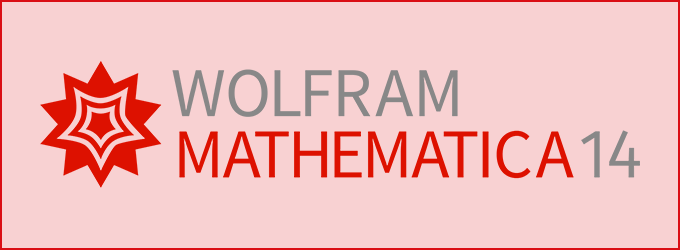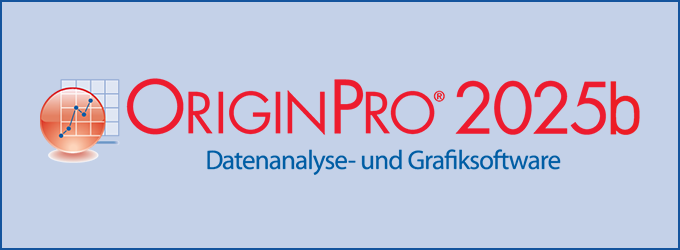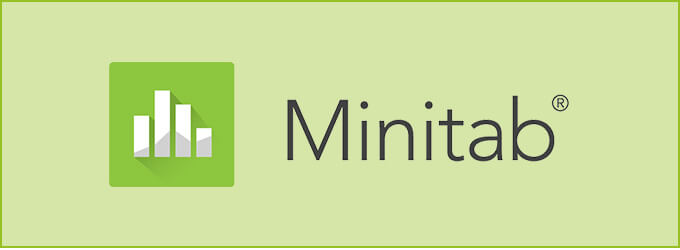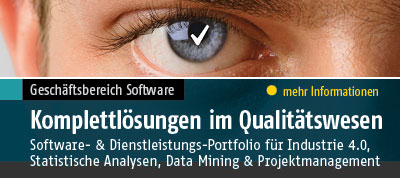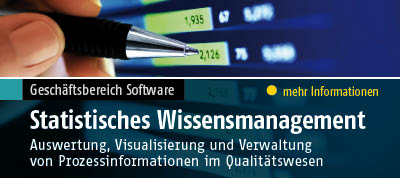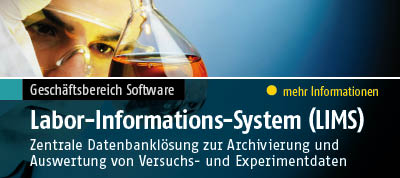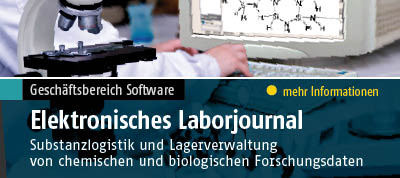Features von ChemDraw Professional
Im Folgenden finden Sie eine Liste der Features von ChemDraw Professional.
(W) - Dieses Feature ist nur auf Windows verfügbar
ChemDraw Professional
ChemFinder Std.
ChemDraw für Excel
ChemDraw ActiveX/Plugin Pro
BioDraw, ChemNMR,Struct=Name & ChemScript
Features von ChemDraw Professional
- ChemDraw ActiveX-Plugin
Bearbeitung von Dokumenten mit der installierten ChemDraw-Version statt mit ActiveX; optimale Ausnutzung des Bildschirms zur Bearbeitung und Zugriff auf das gesamte Spektrum der ChemDraw-Funktionen - Pfeilwerkzeug
Steuerung aller Aspekte gezeichneter Pfeile, einschließlich Bogen, Länge, Stil, Dipol, Verbotspfeile und vieles mehr. - BioDraw
Zeichnen biologischer Reaktionspfade - Biopolymer-Toolbar
Zeichnen von Peptid- und Nukleotid-Sequenzen mit 1- und 3-Buchstaben-Notation - Ketten-Tool
Werkzeug für lineare und Zick-Zack-Kohlenstoffketten - HotLink-Verbindung zu Chem3D
Mit einem Klick in ChemDraw erzeugten Strukturen als 3D-Darstellung in Chem3D - Chemische Dateiformate lesen und schreiben
Lesen und Schreiben chemischer Dateiformate (z.B. skc, mol v3000), einschließlich Spektren und Reaktionen - Warnhinweise bei falschen chemischen Eigenschaften
Rote Kästen weisen auf fehlerhafte Eigenschaften bei Strukturen hin. - ChemNMR Solvent Selection
Anwender können bei der NMR-Spektren-Vorhersage zwischen CDCl3 oder DMSO wählen. - ChemNMR User Proton Shift Database
Benutzer können ihre eigenen Verschiebungskorrekturdaten für die Protonenshiftvorhersage hinzufügen, um vorhandene Daten zu ergänzen, die vom ChemNMR- Algorithmus verwendet werden. - ChemProp
(W) Erweiterte Eigenschaftsparameter, einschließlich BP, MP und mehr - CLogP
CLogP/CMR stellt die neueste Methodologie für die Berechnung von n-Octanol-Wasser-Verteilungskoeffizienten und die molaren Berechnungsindices zur Verfügung. - Benutzerdefinierte Vorlagen und Nicknames
Erstellung und Bearbeitung von Vorlagen und Abkürzungen/Stichworten - HotLink-Verbindung zu Datenbanken
Suche nach chemischen Strukturen in Echtzeit beim Zeichnen in der Revvity Signals Software Informatics-Datenbank - Ausklappen generischer Strukturen
Erstellen Sie mehrere Strukturen aus einer "abgekürzten", generischen Struktur. - Nicht verankerte Schriftzeichentabelle
Sonderzeichen in beliebigen Schriftarten lassen sich sofort in jedes ChemDraw-Dokument einfügen. - Nicht verankertes Periodensystem
Informationen zu allen Elementen sind jederzeit auf dem Desktop verfügbar. - Freihand-Zeichentool
- Gelelektrophorese-Tool
Einfaches Zeichnen von Gelelektrophorese-Platten mit Datenübernahme aus Excel oder anderen Quellen - High-Color-Dokumente und –Vorlagen
Dokumente können auf über 16 Millionen Farben zurückgreifen. - ISIS-style Data SGroups
Daten können Objekten angehängt werden. - LabArt
EPS-Grafiken von Glasgeräten in Publikationsqualität für die Verwendung in ChemDraw-Dokumenten - LogP
Berechnung des logarithmischen Werts des n-Octanol-Wasser-Verteilungskoeffizienten - LogS
Berechnung des logarithmischen Werts des Löslichkeitsproduktes (S) eines Stoffes - Massen- und andere Fragmentierungs-Tools
Es sind drei Fragmentierungs-Tools verfügbar: das Massenfragmentierungs-, das Dissoziations- und das Retrosynthese-Tool. - Microsoft Office-Integration
(W) ChemDraw bietet vollständige Integration über OLE, damit Zeichnungen in Office-Dokumenten eingebunden werden können. - Mehrseitige Dokumente
Erstellen von mehrseitigen Dokumenten und Postern in einer einzigen ChemDraw-Datei. - Name=Struct
Bei Angabe des systematischen oder des Trivial-Namens werden Strukturen und bei Eingabe der Struktur wird der systematische IUPAC-Name generiert. Dies funktioniert für verschiedenste Arten von Verbindungen, z.B. Salze, isotopengelabelte Verbindungen, hochsymmetrische Strukturen und viele weitere organische, anorganische und organometallische Verbindungen. - Online-Menü
(W) Beim Zeichnen einer Struktur oder eines Modells genügt einmaliges Klicken mit der Maus, um von ChemACX.Com Online-Informationen zu Lieferanten abzurufen. - Einfügen von Sequenzen
Anwender können Sequenzen im FASTA-Format einfügen oder eine Zeichenabfolge eines Biopolymers in Form von Einzel- oder Multibuchstaben mit gültigen Trennzeichen (Leerzeichen, Tab oder Bindestrich) kopieren und diese einfach in ChemDraw einfügen, welches diese interpretiert und als chemisch vollständige Sequenz darstellt. - pKa
Berechnen Sie den logarithmischen Wert der Säurekonstante Ka (Ks). - Plasmidkarten-Tool
Erzeugen einer Plasmidmappe durch die Eingabe der Anzahl an Basenpaaren und der Spezifizierung der Teilbereiche, Lokalisation und Benennungen für Marker. - Polymer Draw
Darstellen und Bearbeiten von Polymeren in ChemDraw - Eigenschaften HotLink
Alle chemischen Bezeichnungen, Formeln, Molekulargewichte und andere zu einem Dokument hinzugefügten physikalischen Eigenschaften sind "live", d. h., sie werden automatisch aktualisiert, wenn Änderungen an Strukturdiagrammen vorgenommen werden. - Relative Stereochemie
Ermöglicht die Spezifizierung von Beziehungen zwischen Gruppen von Stereozentren, die kleiner als ein ganzes Molekül sind. - Rotation um frei wählbare Zentren
Änderung des Drehmittelpunkts mit einem Anpassungspunkt der Tools "Lasso" und "Marquee". Die Drehung erfolgt nun um den ausgewählten Ursprung. - Suche in SciFinder
Zeichnen von Molekülen/Reaktionsgleichungen in ChemDraw und direktes Senden einer Anfrage an SciFinder ohne umständliches Ausschneiden und Einfügen. SciFinder muss separat lizenziert werden. - Sequenzierungswerkzeug
Nutzen der 1- und 3-Buchstabencodes, um Peptide und Nukleotide zu zeichnen. Die Sequenzen können anschließend zur chemischen Struktur ausgebreitet und bei Bedarf wieder als Buchstabencode zusammengefasst werden. - Stereochemie
Identifiziert Stereozentren über Cahn-Ingold-Prelog-Regeln. - Stöchiometrische Tabelle
Automatische Verfolgung und Aktualisierung von stöchiometrischen Daten für alle benutzerdefinierten chemischen Reaktionen - Struktursäuberung
Verbesserung schlechter Zeichnungen durch Anpassung von Winkeln, Bindungslängen und Orientierungen - Strukturperspektiven-Tool
Die perspektivische Ansicht von ChemDraw-Molekülen kann mit einfachen horizontalen und vertikalen Mausbewegungen verändert werden. - DC-Platten-Werkzeug
Ermöglicht das Zeichnen von Dünnschicht-Chromotographie-Platten. - tPSA (Topological Polar Surface Area)
Das topologische Polaritätsflächen-Werkzeug erlaubt es, eine schnell erstellte Approximation der molekularen Polaritätsflächen zu erzeugen.
Features von ChemFinder Standard
- ActiveX-Kontrollfelder
(W) Einbindung von ActiveX-Kontrollen von Drittanbietern in Formulare. - Automatische Erstellung von Formularen
(W) Automatischer Aufbau oder automatische Erweiterung von Datenbanken durch das Importieren von Strukturen aus einer Sammlung von Strukturdateien, SD-Dateien oder anderen Quellen. - Chemikaliensuche
(W) Suchen von (Sub-)Strukturen, Ähnlichkeiten, numerischen Werten, Text, chemischen Formeln (inkl. wählbarer Einschränkungen der Auswahl vorhandener Elemente) oder Daten. Diese Funktion unterstützt auch die Suche nach Tautomeren oder alternativen Gruppen. - Mehrfache Datenansichten
(W) Beobachten der eigenen Aufzeichnungen als Formulare oder tabellarisch. - Python-Skriptsprache
Python-Skripte zur Automatisierung von Anwendungen. Diese können mit Schaltflächen im Formular oder mit der Datenbank verknüpft werden, um Ereignisse auszulösen. Der verbesserte Skript-Editor kann für die Entwicklung und das Debuggen verwendet werden – jetzt mit interaktiver zeilenweiser Ausführung – sowie für die Anzeige von Ausgaben in einem andockbaren Textfenster. - Scripting
(W) Python-Skripte können zur Automatisierung der Verwendung geschrieben und genutzt werden. Der erweitere Skript-Editor kann zum Entwickeln, Debuggen und Anzeigen von Outputs in einem separaten Textfenster genutzt werden. Die Verwendung von CAL, einer einfachen Programmiersprache, die auch von Nicht-Programmierern zur Automatisierung, für selbst laufende Demos und benutzerorientierte Aufgaben verwendet werden kann, ist ebenfalls möglich. - Standardisierter Umgang mit inbegriffenen Wasserstoffatomen
Entspricht Industriestandards. - Unterformulare
(W) Verlinken von rationalen Daten mit der Haupttabelle mittels untergeordneter Formulare. - Formulare mit Registerkarten
(W) Anpassen von Formularen mit Hilfe von Registerkarten, um diese übersichtlicher zu gestalten.
Features von ChemDraw für Excel
- ChemDraw/Excel
Verwenden von Excel zur Verwaltung und Analyse chemischer Daten. - Name>Struct/Excel
Erstellung einer ChemDraw-Struktur in Microsoft Excel für die meisten Substanzen durch Eingabe einer systematischen chemischen Bezeichnung.
Features von ChemDraw ActiveX/Plugin Pro
- ActiveX-Bearbeitung in ChemDraw
Bearbeitung von Dokumenten mit der installierten ChemDraw-Version statt mit ActiveX; optimale Ausnutzung des Bildschirms zur Bearbeitung und Zugriff auf das gesamte Spektrum der ChemDraw-Funktionen - Pfeilwerkzeug
Steuern aller Aspekte gezeichneter Pfeile, einschließlich Bogen, Länge, Stil, Dipol, Verbotspfeile und vieles mehr. - Chemische Dateiformate lesen und schreiben
Lesen und Schreiben chemischer Dateiformate (z.B. skc, mol v3000), einschließlich Spektren und Reaktionen - Warnhinweise bei falschen chemischen Eigenschaften
Rote Kästen weisen auf fehlerhafte Eigenschaften bei Strukturen hin. - Benutzerdefinierte Vorlagen und Nicknames
Erstellung und Bearbeitung von Vorlagen und Abkürzungen/Stichworten - Ausklappen generischer Strukturen
Erstellen Sie mehrere Strukturen aus einer "abgekürzten", generischen Struktur. - Nicht verankerte Schriftzeichentabelle
Sonderzeichen in beliebigen Schriftarten lassen sich sofort in jedes ChemDraw-Dokument einfügen. - Nicht verankertes Periodensystem
Informationen zu allen Elementen sind jederzeit auf dem Desktop verfügbar. - Freihand-Zeichentool
Features von BioDraw
Die nachfolgende Liste enthält detailliertere Informationen zu der in ChemDraw integrierten Anwendung BioDraw, mit der biologische Reaktionswege unter Zuhilfenahme von Standardelementen, wie z.B. Membranen, DNA, Enzyme, Rezeptoren und Reaktionspfeilen, erstellt werden können. Schematische Darstellungen von tRNA, Ribosomen, Helices, Golgi-Apparaten, G-Proteinen, Immunoglobin, Mitochondrien etc. können damit schnell und einfach erstellt werden
- Biopolymer-Toolbar
Sie ermöglicht das Zeichnen von Peptid- und Nukleotid-Sequenzen mit 1- und 3-Buchstaben-Notation, wobei die natürlichen L- sowie unnatürlichen D- und Beta-Aminosäuren inkludiert sind. Zwischen der Notation und der strukturellen Darstellung kann einfach und schnell hin und her gewechselt werden. Ebenso können Verknüpfungen und Schutzgruppen über die automatische Worterkennung hinzugefügt werden. Das Bindungswerkzeug kann genutzt werden, um Disulfide- und Laktam-Brücken sowie zyklische Peptide zu erzeugen. - Nicht verankerte Zeichentabelle
Sonderzeichen in beliebigen Schriftarten lassen sich sofort in jedes ChemDraw-Dokument einfügen. - Freihand-Zeichentool
Die Maus oder andere Zeigewerkzeuge können genutzt werden, um Freihandstrukturen mit dem intuitiven Zeichenwerkzeug zu erstellen. - High-Color-Dokumente und –Vorlagen
Dokumente können über 16 Millionen Farben enthalten. - Microsoft Office-Integration
(W) ChemDraw bietet vollständige Integration über OLE, damit Zeichnungen in Office-Dokumenten eingebunden werden können. - Plasmidkarten-Tool
Erzeugen von Plasmidkarten nur durch die Eingabe der Anzahl an Basenpaaren in die Plasmidkarte und die Spezifizierung des Bereichs an Regionen, die Lokalisation und die Bezeichnung der Marker. - Polymer Draw
Darstellen und Bearbeiten von Polymeren in ChemDraw
Features von ChemNMR
- ChemNMR
ermöglicht die Vorhersage von Protonen- und Kohlenstoff-13-NMR-Spektren mit exakteren chemischen Verschiebungen und deren Aufspaltungsmustern. - ChemNMR User Proton Shift Database
Benutzer können ihre eigenen Verschiebungskorrekturdaten für die Protonenvorhersage hinzufügen, um vorhandene Daten zu ergänzen, die vom ChemNMR- Algorithmus verwendet werden.
Features von Struct=Name
Bei Angabe des systematischen oder des Trivial-Namens werden Strukturen und bei Eingabe der Struktur wird der systematische IUPAC-Name generiert. Dies funktioniert für verschiedenste Arten von Verbindungen, z.B. Salze, isotopengelabelte Verbindungen, hochsymmetrische Strukturen und viele weitere organische, anorganische und organometallische Verbindungen.
Features von ChemScript
- ChemScript Pro
Individuell anpassbare Skripte zum Berechnen oder Ändern von chemischen Strukturen







